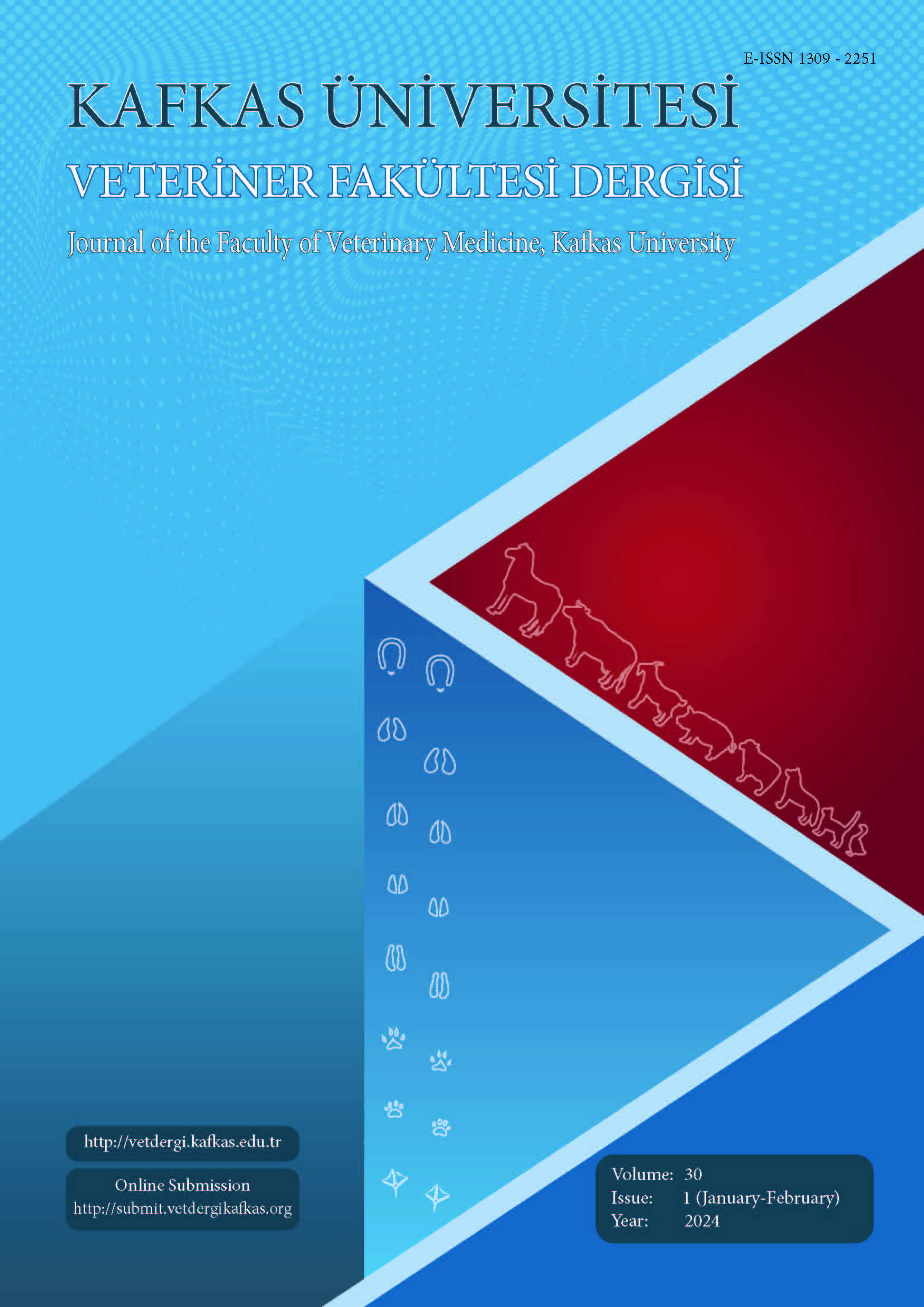
This journal is licensed under a Creative Commons Attribution-NonCommercial 4.0 International License
Kafkas Üniversitesi Veteriner Fakültesi Dergisi
2024 , Vol 30 , Issue 1
Molecular Analysis and Associated Risk Factors of Theileria annulata in Cattle from Various Zones of Balochistan, Pakistan
1Department of Parasitology, University of Veterinary and Animal Sciences, Lahore, PAKISTAN2State Key Laboratory of Marine Resource Utilization in South China Sea, College of Oceanology, Hainan University, Haikou 570228, Hainan, CHINA
3Directorate Planning & Development, Livestock & Dairy Development Department Balochistan, Quetta 87500, PAKISTAN DOI : 10.9775/kvfd.2023.30151 Theileriosis is a protozoan parasite that is transmitted by ticks and infects a wide range of animals worldwide. This study aims to assess the molecular prevalence and related risk factors of theileriosis in Balochistan, Pakistan. Standard microscopy methods, polymerase chain reaction (PCR), 18S small subunit ribosomal RNA gene sequencing, and phylogenetic analysis were used. For this purpose, a total of 408 blood samples were collected from tick-infested cattle in Zhob, Loralai, and Quetta districts of Balochistan, Pakistan. Microscopy and subsequent PCR analysis confirmed the highest prevalence of Theileria annulata in Loralai district (11.76% and 12.75%), followed by Zhob district (11.27% and 12.25%), and Quetta district (8.34% and 9.56%), respectively. Moreover, the prevalence of T. annulata was higher in young cattle (85.82%), followed by female cattle (58.87%), and exotic crossbred cattle (33.33%) in the study area. However, various variable such as sex, area, and breeds of the cattle were not significantly correlated (P>0.05) with the presence of T. annulata, except for the age of animals (P<0.05). In addition, sequencing and phylogenetic analyses revealed that the isolated T. annulata was closely related to the isolates from Türkiye, Italy, Egypt, Iran, and Pakistan. Hence, these findings will contribute to the development of more effective control strategies for theileriosis in the cattle population of Balochistan, as well as in Pakistan on a broader scale. Keywords : Balochistan, Cattle, Phylogeny, Prevalence, Risk factors, Theileria annulata










